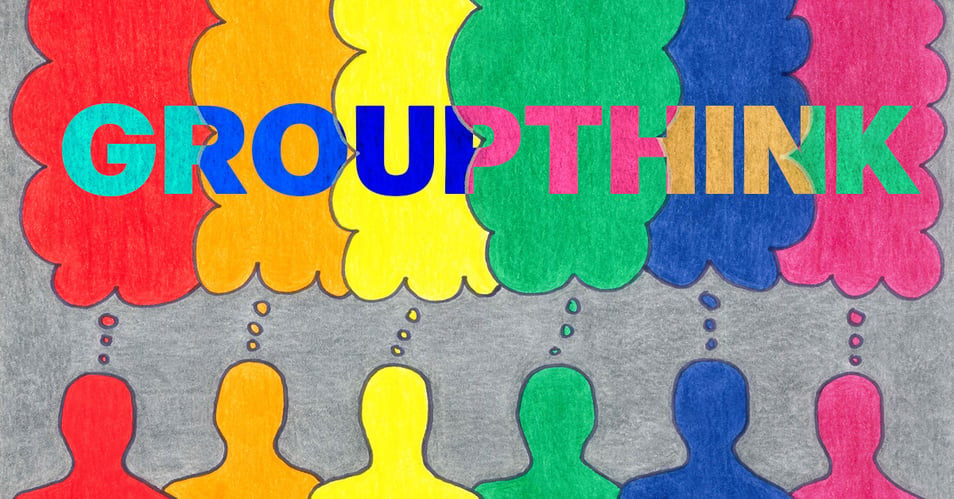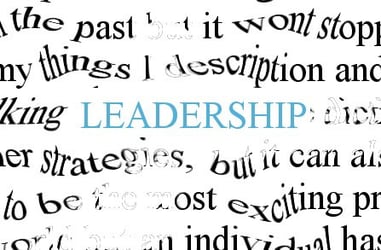How to Avoid Groupthink in Decision Making & Strategies for Better Outcomes

Updated May 19, 2025
Have you ever been in a meeting where everyone nods in agreement, even when you sense something isn’t quite right? This phenomenon, known as groupthink, can lead businesses down a dangerous path of poor decisions and missed opportunities. While teamwork is essential, blindly following the majority can stifle creativity and innovation. Learning how to avoid groupthink in decision making can help your business make smarter, more effective choices.
Understanding Groupthink and Its Origins
Groupthink is a psychological phenomenon where a group of people prioritizes harmony and consensus over critical thinking and diverse perspectives. It can lead to poor decision making because individuals hesitate to challenge ideas, even when they see potential flaws. The term "groupthink" was coined in 1972 by social psychologist Irving Janis, who studied how cohesive groups sometimes make irrational choices.
Groupthink often happens when a team values agreement over exploring different viewpoints. This tendency can be particularly strong in business environments where maintaining unity seems more important than questioning the status quo. While teamwork and collaboration are vital for a business, too much uniformity in thinking can result in costly mistakes.
Key Characteristics of Groupthink
Groupthink doesn't just happen by chance. It has distinct features that set it apart from other group decision-making problems:
- Illusion of invulnerability: A group may believe their ideas are inherently correct or that they cannot be wrong. This can lead group members to agree with bad ideas without questioning them.
- Collective rationalization: Rather than engaging in independent critical thinking, the group may make excuses for or rationalize certain choices.
- Belief in inherent morality: When a group becomes convinced of its own moral superiority, it can lead to ignoring ethical considerations or justifying questionable actions.
- Stereotyped views: Individuals who contradict or oppose the group's decisions may be scapegoated or perceived as inferior, reinforcing the group's belief in its own superiority and correctness.
- Direct pressure on dissenters: People in the group who dissent or go against the collective will of the group may be pressured to conform or could be removed from the group altogether.
- Self-censorship: Over time, members withhold their dissenting views and counterarguments.
- Illusion of unanimity: Members of the group may mistakenly believe that all the other members agree with the group’s decision. Silence is often seen as consent or agreement.
- Mind guards: There may be group members who shield the group from information or data that would go against the group’s decision. They may omit facts or change information to fit the narrative put forth by the group.
Take our short interactive quiz to see if your team is at risk for groupthink:
The Dangers of Groupthink
When groupthink takes hold, businesses can suffer in several ways:
- Poor decision making: Without dissenting voices, teams may overlook risks or fail to consider better alternatives.
- Lack of innovation: A culture where disagreement is discouraged can stifle creativity and prevent new ideas from emerging.
- Wasted resources: Businesses may pursue ineffective strategies simply because no one spoke up to challenge the decision.
- Ethical issues: Groupthink can lead to unethical practices when no one questions questionable actions and believes that everyone agrees.
Real Examples of Groupthink
The Challenger Disaster: One of the most well-known examples of groupthink occurred in 1986 with the Space Shuttle Challenger disaster. Engineers at NASA and the company that manufactured the shuttle’s solid rocket boosters had concerns about launching in cold weather. However, due to pressure to stay on schedule and avoid conflict, decision-makers ignored these warnings. As a result, the shuttle exploded shortly after liftoff, killing all seven astronauts on board. The decision-making group dismissed dissenting voices, had an illusion of unanimity, and participated in collective rationalization, as they downplayed risks despite clear evidence of potential failure.
The Bombing of Pearl Harbor: Another historical event involving groupthink was Japan’s attack of Pearl Harbor. Despite numerous warning signs, U.S. military leaders maintained a collective belief that Japan wouldn't dare attack American soil. This illusion of invulnerability led to a severe underestimation of the threat. In this scenario, U.S. officials stereotyped the enemy as inferior, ignored contradictory information, and silenced military personnel who voiced concern.
The Collapse of Swissair: Swissair's dramatic collapse in 2001 serves as a cautionary tale of groupthink in the business world. The airline's downfall was rooted in a series of misguided decisions fueled by collective overconfidence and a failure to adapt to changing market conditions. The management team of Swissair justified risky expansions with a belief in inherent morality, suppressed dissenting opinions, and dismissed low-cost competitors as inferior.
These examples highlight that ignoring dissenting opinions and prioritizing unity over careful analysis can have devastating consequences. Whether an organization is large or small, similar failures can occur when teams refuse to challenge flawed strategies due to fear of disrupting the perceived consensus.
How Can Groupthink Be Avoided
Preventing groupthink requires actively encouraging critical thinking and open discussions. It is essential to create an environment where ideas can be freely shared, and diverse perspectives are valued. By implementing specific strategies, teams can effectively avoid groupthink and foster a culture of innovation. Here are some effective strategies to foster a balanced decision-making process:
Encourage diverse perspectives
Build teams with individuals from different backgrounds and areas of expertise. Consider utilizing tools like DiSC, StrengthsFinder, or other personality assessments to ensure a variety of approaches to decision making. A mix of viewpoints helps identify blind spots and improves problem-solving.
Promote open dialogue
Create an environment where employees feel safe expressing dissenting opinions. Leaders should ask for input from everyone, especially those who typically remain quiet.
Appoint a devil’s advocate
Designate someone to challenge ideas and highlight potential risks. This forces the team to consider alternative viewpoints.
Break into smaller groups
Instead of discussing a decision as one large group, have smaller teams evaluate the issue independently before presenting their findings. This reduces the pressure to conform.
Use anonymous feedback
Provide an opportunity for employees to submit opinions and concerns anonymously. This helps reveal hidden disagreements that might not surface in group discussions.
Encourage a culture of inquiry
Teach employees to ask, "What if?" and "Why?" rather than accepting ideas at face value. Businesses that cultivate curiosity tend to make better decisions.
Review past decisions
Regularly analyze previous choices to understand what worked and what didn’t. Learning from past mistakes can help teams avoid similar pitfalls in the future.
Balancing Group Cohesion with Critical Thinking
Understanding how groupthink can be avoided is crucial, it’s also important to maintain team cohesion. A workplace filled with constant disagreement can also become unproductive. The key is to strike a balance by fostering an environment where collaboration thrives, but not at the expense of critical thinking.
Successful businesses encourage respectful debate while ensuring that once a decision is made, the team moves forward together. By embracing diverse viewpoints and promoting thoughtful discussions, companies can avoid the pitfalls of groupthink and drive smarter, more effective decision making.
In the end, businesses that challenge the status quo and welcome fresh ideas are the ones that innovate and succeed. By recognizing and addressing groupthink, organizations can ensure they make decisions that are well-informed, ethical, and beneficial in the long run.
EO Johnson’s business consulting services can assist your organization’s decision making by providing a clear and focused outside perspective. We are experts at process mapping and business improvement planning. If you need help taking your business to the next level, let’s have a conversation.






